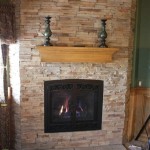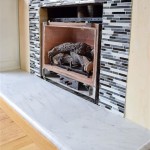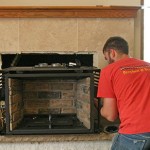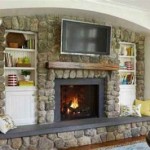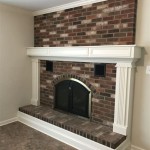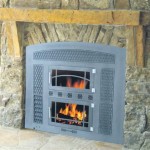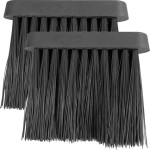LP Gas Fireplace TV Stands: A Comprehensive Guide
LP gas fireplace TV stands represent a fusion of functionality and aesthetics, offering a practical solution for home heating and entertainment. These units combine the ambiance of a traditional fireplace with the utility of a TV stand, providing a centralized focal point for living spaces. This article delves into the various aspects of LP gas fireplace TV stands, covering their benefits, design considerations, installation requirements, safety features, and maintenance practices.
The term "LP gas" refers to liquefied petroleum gas, a mixture of propane and butane. LP gas is a versatile fuel source that is commonly used for heating, cooking, and powering various appliances. In the context of fireplace TV stands, LP gas provides a clean-burning and efficient source of heat, offering an alternative to traditional wood-burning fireplaces or electric heaters. Furthermore, due to the relative ease of installation and operation compared to natural gas, LP gas remains viable where natural gas lines are unavailable or cost-prohibitive to install.
An LP gas fireplace TV stand typically consists of a firebox, a burner system, a log set (often ceramic or refractory), a control panel, and a cabinet or stand designed to accommodate a television and associated entertainment equipment. The firebox houses the burner and log set, while the burner system regulates the flow of LP gas and ignites the fuel. The log set mimics the appearance of real wood, enhancing the visual appeal of the fireplace. The control panel allows for adjusting the flame height and heat output, and the cabinet provides storage for media devices, gaming consoles, and other accessories.
Benefits of LP Gas Fireplace TV Stands
LP gas fireplace TV stands offer several advantages over conventional heating and entertainment setups. One of the primary benefits is their space-saving design. By combining the functions of a fireplace and a TV stand, these units eliminate the need for separate pieces of furniture, freeing up valuable floor space in smaller living rooms or apartments. This integration is particularly advantageous for urban dwellers or those with limited space.
Another significant benefit is the ease of installation and operation. Unlike traditional wood-burning fireplaces, LP gas fireplaces do not require a chimney or extensive venting system. Instead, they typically vent directly through an exterior wall or utilize a vent-free design, simplifying the installation process. Furthermore, LP gas fireplaces are easy to operate, with simple controls for adjusting the flame height and heat output. Many models also include remote controls for added convenience.
LP gas fireplaces are also known for their energy efficiency. Compared to traditional wood-burning fireplaces, LP gas fireplaces produce more heat per unit of fuel, reducing energy consumption and lowering heating costs. Many models also feature thermostatic controls that automatically adjust the flame height to maintain a consistent room temperature, further enhancing energy efficiency. The ability to control the heat output more precisely also contributes to a reduction in wasted energy.
Furthermore, LP gas fireplaces offer a clean and environmentally friendly alternative to wood-burning fireplaces. LP gas is a relatively clean-burning fuel, producing fewer emissions than wood. This reduces the impact on air quality and minimizes the risk of indoor pollution. The reduction in particulate matter is a significant health benefit, particularly for individuals with respiratory conditions.
Design Considerations for LP Gas Fireplace TV Stands
When selecting an LP gas fireplace TV stand, several design considerations should be taken into account. The size of the unit should be proportional to the size of the room and the television. A unit that is too large can overwhelm the space, while a unit that is too small may not provide adequate heating or entertainment functionality. Measuring the available space and the dimensions of the television is crucial before making a purchase. The weight capacity of the unit to support the TV without any damages is of utmost important.
The style of the fireplace TV stand should complement the existing décor of the room. These units are available in a wide range of styles, from traditional to contemporary, and can be customized with different finishes, materials, and accents. Consider the color scheme, furniture style, and overall aesthetic of the room when choosing a fireplace TV stand. A cohesive design creates a more visually appealing and harmonious living space.
The functionality of the fireplace TV stand should also be considered. Some units offer additional storage space for media devices, gaming consoles, and other accessories. Others feature built-in speakers or sound systems for an enhanced entertainment experience. Determine the specific needs and preferences before selecting a unit. For instance, the number of shelves, the depth of the cabinet, and the presence of cable management systems can all contribute to a more organized and functional entertainment center.
The type of venting system is another important design consideration. Vent-free LP gas fireplaces do not require a chimney or venting system, making them easier to install in existing homes. However, they require proper ventilation to ensure safe operation. Direct-vent LP gas fireplaces vent directly through an exterior wall, providing a more efficient and safer heating solution. Consider the available venting options and the specific requirements of the home when choosing a fireplace TV stand.
The appearance of the flame and log set is also a significant design element. Some LP gas fireplaces feature realistic-looking log sets and flickering flames that mimic the appearance of a traditional wood-burning fireplace. Others offer more modern and stylized flame effects. Choose a fireplace TV stand that provides the desired aesthetic and ambiance. Some models offer adjustable flame colors and intensity, allowing for further customization.
Installation, Safety Features, and Maintenance
The installation of an LP gas fireplace TV stand should be performed by a qualified technician. Incorrect installation can lead to gas leaks, fire hazards, and other safety risks. A qualified technician will ensure that the unit is properly connected to the LP gas supply, that the venting system is installed correctly, and that all safety features are functioning properly. It is crucial to adhere to local building codes and regulations during the installation process.
LP gas fireplace TV stands are equipped with a variety of safety features to prevent accidents and ensure safe operation. These features may include a pilot light, a thermocouple, a flame sensor, and an oxygen depletion sensor. The pilot light ignites the main burner, while the thermocouple and flame sensor monitor the flame and shut off the gas supply if the flame is extinguished. The oxygen depletion sensor monitors the oxygen level in the room and shuts off the gas supply if the oxygen level drops below a safe threshold. Regular inspection and maintenance of these safety features are essential.
Proper maintenance is essential for ensuring the longevity and safe operation of an LP gas fireplace TV stand. Regular cleaning of the firebox and log set is necessary to remove dust, soot, and other debris that can accumulate over time. The burner system should also be inspected and cleaned periodically to ensure proper airflow and combustion. A qualified technician should perform annual inspections and maintenance to ensure that all components are functioning properly. This includes checking for gas leaks, inspecting the venting system, and testing the safety features.
The area around the fireplace TV stand should be kept clear of flammable materials. Curtains, rugs, and other fabrics should be at least three feet away from the unit to prevent fire hazards. Never store flammable liquids or aerosols near the fireplace. Children and pets should be supervised when the fireplace is in operation. Fire safety regulations must be adhered to at all times around the LP gas fireplace tv stand to avoid unwanted fire incidences.
While LP gas presents a relatively safe energy option, carbon monoxide detectors play a pivotal role in maintaining safety. Carbon monoxide (CO) is a colorless, odorless gas that can be produced by incomplete combustion of fuels such as LP gas. Installing CO detectors near the fireplace TV stand and in sleeping areas is crucial for detecting any CO leaks and alerting occupants to potential danger. Regularly test and replace the batteries in CO detectors to ensure their effectiveness.

Propane Fireplaces Ventless And Natural Gas Heaters Fireplace Entertainment Electric Center Tv Stand

Home Decorators Collection Hillrose 52 In Freestanding Electric Fireplace Tv Stand Blue Ash With Rustic Taupe Oak Top 2240fm 26 310 The Depot

Can I Hang A Tv Over My Fireplace Woodlanddirect Com

75 Hershel Simply Brown Infrared Tv Stand Electric Fireplace
:max_bytes(150000):strip_icc()/ventless-gas-fireplaces-4160746-hero-f9d4bdcd9bd446eb84406de306f790ba.jpg?strip=all)
How To Pick Out A Ventless Gas Fireplace

Allen Roth 56 In W Chambray Infrared Quartz Electric Fireplace The Fireplaces Department At Com

Best Modern Fireplace Designs Blaze

Grant 48 Rustic Farmhouse Fireplace Tv Stand Walker Edison

Empire Boulevard 60 Vent Free Linear Ip W Thermostat Control

Muskoka Sinclair 60 In Bluetooth Media Electric Fireplace Tv Stand Aged Cherry 259 18 48 Kit The Home Depot
Related Posts


